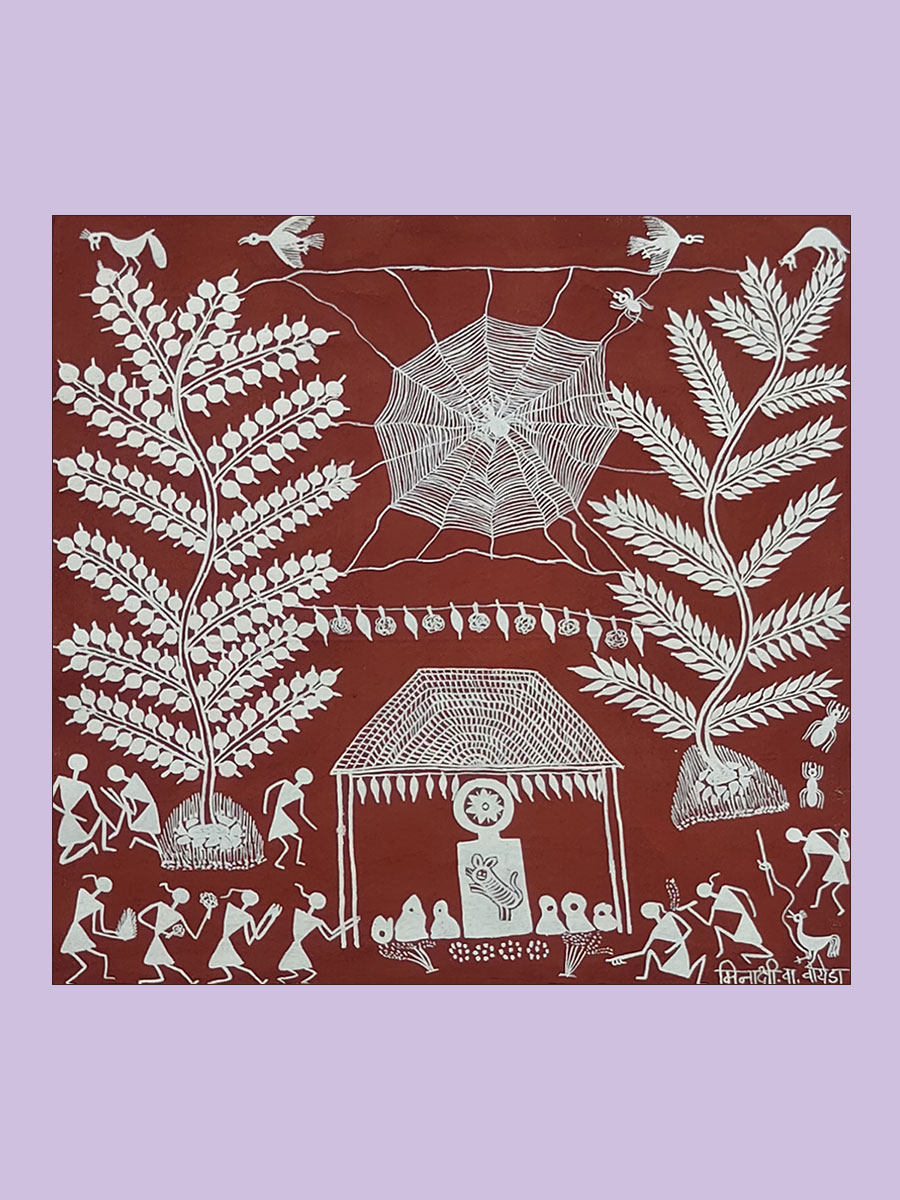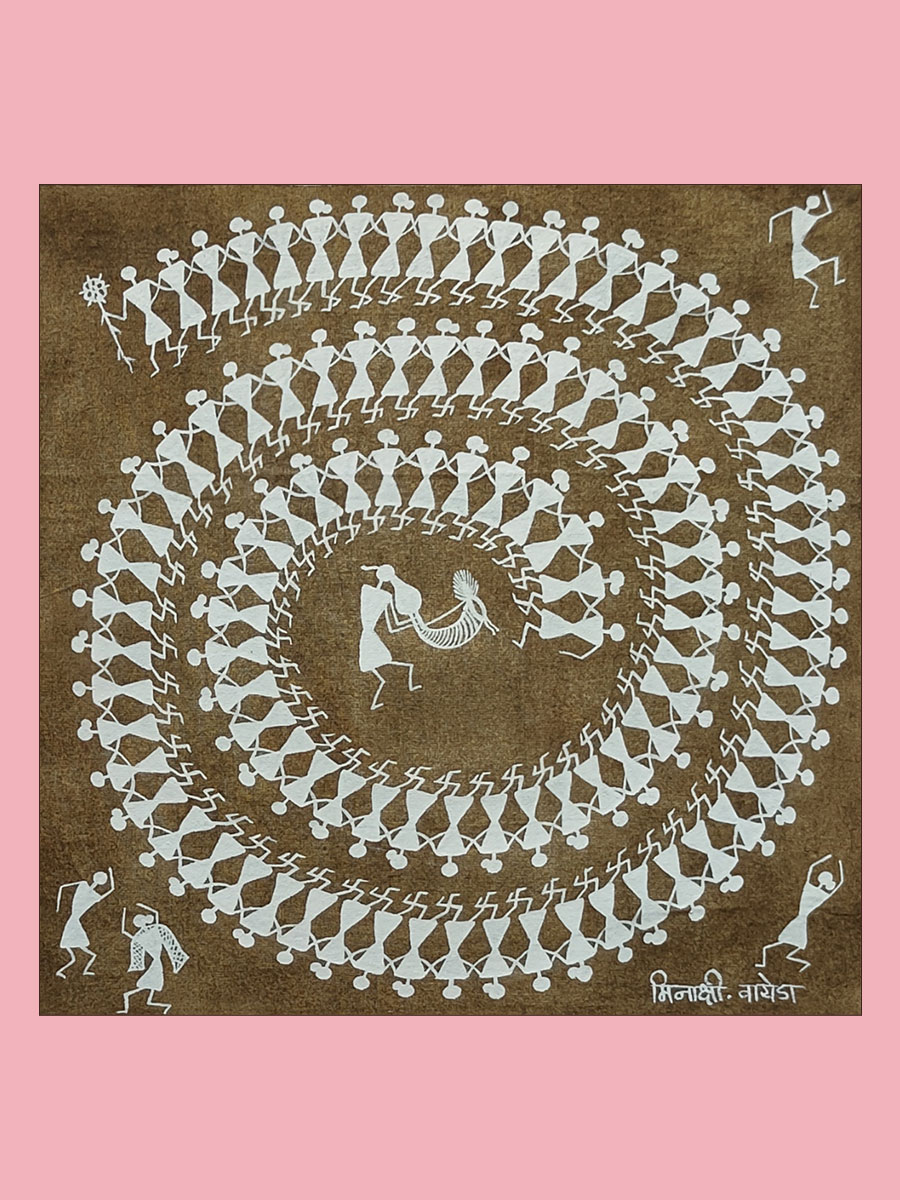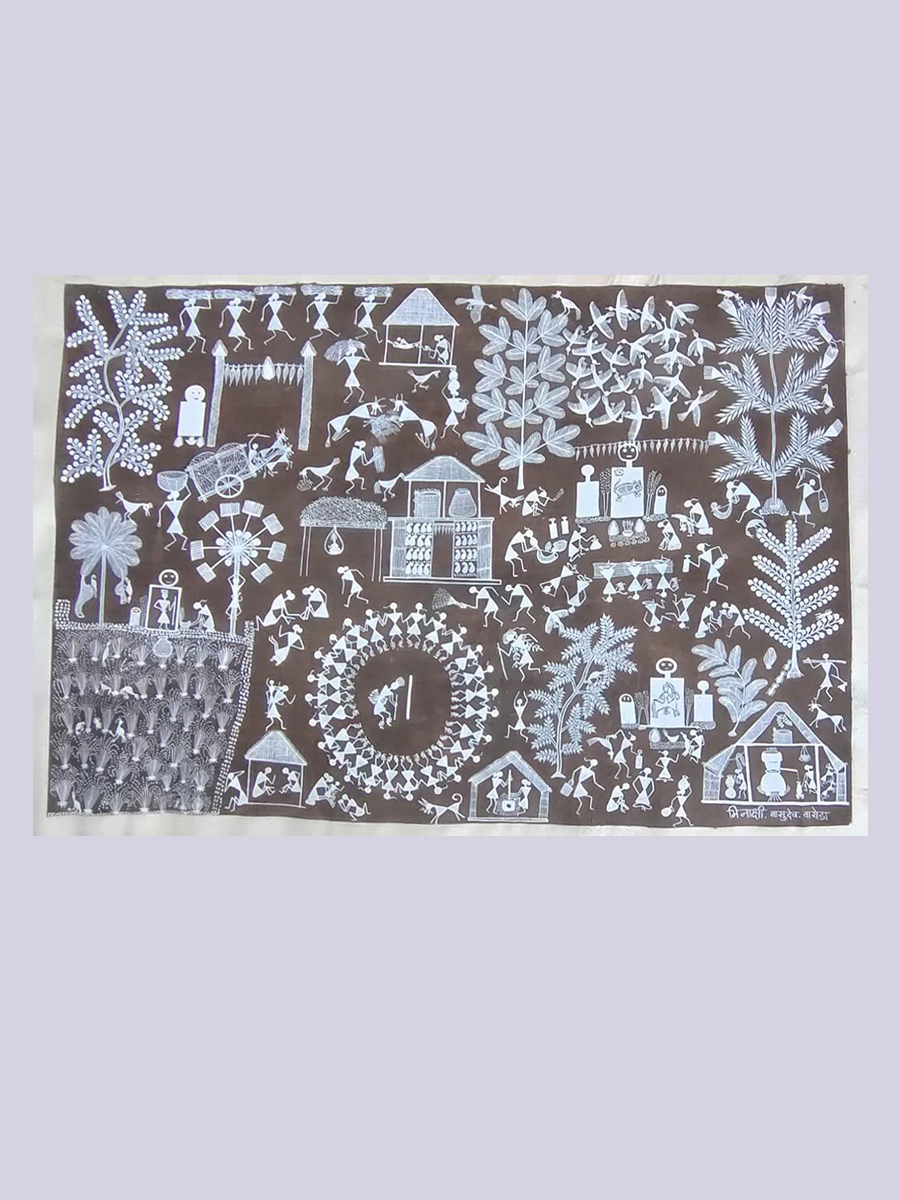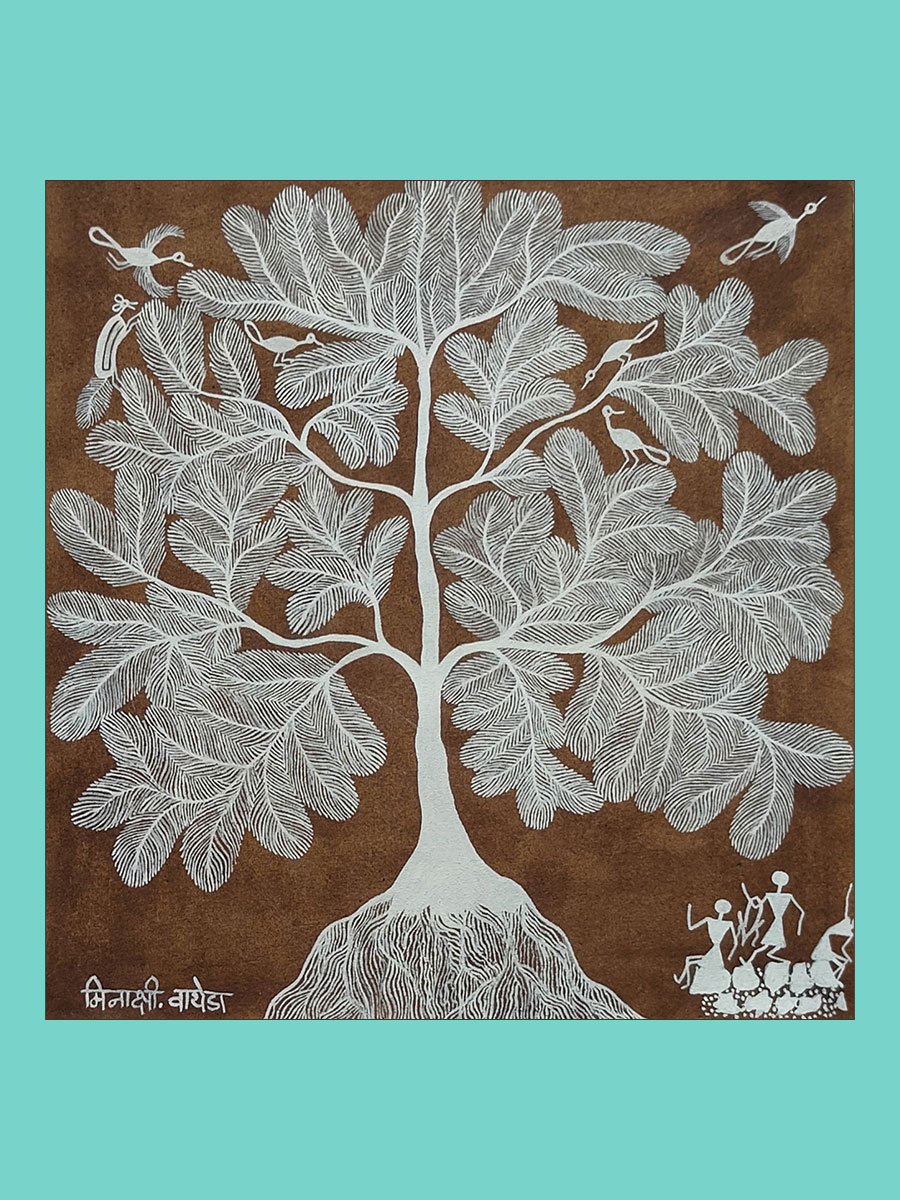The Timeless Charm of Warli Art Paintings
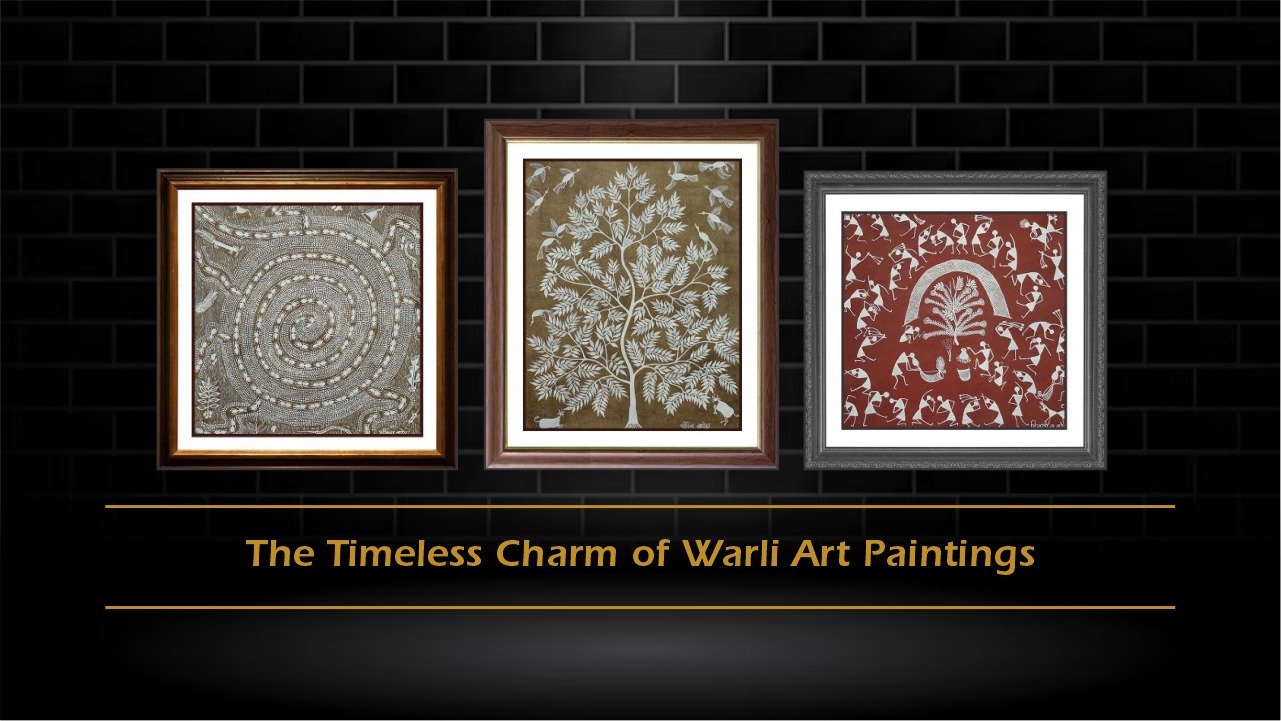
The Warli tribe, one of the largest tribes in India, have kept alive for over a millennium a tradition and art form that is unique to them and their way of life. Preserved from the ravages of time, this art form today decorates innumerable public and private spaces across India and abroad. The enchanting world of Warli art paintings is a magical realm where simplicity and geometry meet artistic brilliance. Originating from the Warli tribal communities of Maharashtra and its neighbouring states, this is a traditional form of tribal wall painting that has captivated the imaginations of art enthusiasts for centuries.
The Warli Tribes
The Warli tribes are primarily found in the regions of Dahanu, Talasari, Jawhar, Mokhada, and Palghar in Maharashtra, which are located north of the Sahyadri mountain range. These areas, situated in the northern part of the state, are known for their dense forests, and rolling hills. The origin of the word 'Warli' is believed to come from the term 'warla,' which means ‘tilled land’.
The name is so apt because the Warli tribe leads a life close to the bosom of Mother Nature, following a primarily agrarian lifestyle. They live in small, close-knit settlements and practise a communal way of life. The tribe has its own distinct language known as Warli, which is spoken by the community members. Originally Warli artists employed the walls of their clay huts as the surface for their paintings. It is their way of dressing up Mother Earth who gifts them the natural resources to construct their homes. For generations, Warli art has been passed down from master to apprentice, with each painting narrating stories of the tribe's vibrant cultural, social and spiritual life.
Handmade Tribal Warli Painting showing villagers praying to the native deity
Features of a Breathtaking Art Form
Warli art is believed to have emerged as a form of ritualistic expression, often associated with festivities and ceremonies. It utilises basic geometric shapes like circles, triangles, and squares, each symbolising different elements of nature. The circle represents the sun and the moon, while the triangle depicts mountains and conical trees. The square signifies a sacred enclosure or land. This square is the central motif in Warli art, specifically the "chauk" which is of two types - Devchauk and Lagnachauk. Devchauk often depicts the mother goddess, symbolising fertility. Lagnachauk symbolizes the sacred marriage altar or the marriage ceremony itself within the Warli culture.
Warli art rarely features male gods, instead focusing on spirits taking human form. Surrounding the central motif, scenes of hunting, fishing, farming, trees, animals, birds, insects, festivals, and dances are portrayed. People and animals are represented by inverse triangles joined at their tips, symbolising balance and animating the bodies. Another common theme is the representation of men with wider tops and women with wide bottoms, by using triangles of different sizes.
Symbolism and Cultural Significance
Warli art is deeply rooted in the tribal community's beliefs, customs, and spiritual practices. Each element in a Warli painting holds symbolic significance. The human figures portray the tribal community engaged in various activities, highlighting their connection with nature and their dependence on it for sustenance.
Daily activities of village life are also depicted in Warli art, but a prominent aspect within them is the tarpa dance. This dance involves men and women forming a circle, entwining their hands, and moving around the tarpa player. The musician plays different notes, directing the dancers to move clockwise or counterclockwise. The tarpa player assumes a role similar to a snake charmer, with the dancers figuratively becoming the snake. They attempt to encircle the audience, symbolic of the circle of life. Warli paintings predominantly feature white pigment on a brown or red background. White symbolises peace, purity, and the divine, brown typically represents the earth, symbolising fertility, grounding, and the connection to nature while red symbolises auspiciousness, energy, and power and is associated with the life force, vitality, and the spirit of celebration. The simplicity of Warli art adds to its timeless appeal, allowing art enthusiasts to focus on the essence of the subject matter
Handmade Tribal Warli Painting showing dancing tribals around a central Tarpa player
Unique and Sustainable Materials
Warli art finds its base surface on the walls or floors of tribal huts. These huts are constructed using mud, cow dung, and hay, resulting in a rough and textured canvas for the artwork. While contemporary adaptations of Warli art are now done on canvas or paper to make them commercially available, the traditional practice of painting on mud walls remains prevalent within the tribal communities.
The creation of Warli paintings involves the use of natural materials such as rice paste, cow dung, and ochre pigments. Rice paste, a crucial component of Warli art, is made by grinding rice into a fine powder and mixing it with water, resulting in a thick, white paste. This paste is then applied to the artwork, forming the iconic white patterns and motifs. Although natural pigments are occasionally used to add color accents, their prominence in Warli art is not as widespread as that of the white rice paste. To paint on the textured mud or wall surfaces, artists fashion brushes from thin bamboo sticks, fraying or chewing the ends to create a brush-like shape, enabling precise and controlled brushstrokes.
The use of natural materials in Warli art not only reduces its ecological footprint but also minimizes the need for additional resources. The art form embraces the existing surfaces of mud huts, eliminating the necessity for external canvases. However, this traditional form of Warli art cannot be easily commercialised, making it challenging to find patronage. Consequently, in recent times, practitioners have started using a coarse cotton cloth called Manjarpat as a base for their paintings. While this adds a commercial element to the art form, it preserves its sustainability by utilising a material that aligns with the traditional and eco-friendly nature of Warli art.
Handmade Tribal Warli painting celebrating the coexistence of nature and humans
Preservation and Modern Adaptations
Despite adapting to market forces, the preservation of Warli art has faced challenges in the face of modernization and changing lifestyles. However, artisans, organisations, and the Indian government have recognized the need to protect and energize this ancient art form. Efforts have been made to provide training and support to Warli artists, ensuring the continuity of their craft. Additionally, Warli art has found its place in the contemporary world, with adaptations seen in fashion, home decor, and fine art. These modern adaptations have brought Warli art to a wider audience, helping to sustain its relevance in today's world. It has transcended geographical boundaries and garnered global recognition and appreciation. International exhibitions and collaborations have showcased the beauty and cultural significance of Warli art.
In an era where modern trends and commercialization often overshadow traditional values, it is a relief to witness the unwavering grounding of Warli art. Despite contemporary influences, Warli art has remained steadfast, preserving its rich heritage and cultural significance. For instance, Warli tribes, like many others, swear by the purifying effect of cow dung, one of the Panchagavyas (the five sacred ingredients from a cow). And reflecting this, a Warli painting available for sale on Planet Handcrafted carries a clear instruction that the painting must be kept away from water because the base of the painting is prepared by using a mix of cow dung and water. This shows a clear commitment to remain true to tradition without use of, say, synthetic glues and adhesives which probably involve less effort, but dilute the authenticity of the art form.. True connoisseurs of art will ensure that the timeless artistic traditions do not succumb to the artifices of commercialization!
Handmade Tribal Warli Painting of children with slingshots out to hunt in the forest
India’s Treasure
The rich history, unique artistic elements, and symbolic storytelling make Warli art a treasured heritage of India. It is essential to preserve and promote this traditional art form and ensure its survival for future generations. By exploring and appreciating the beauty of Warli art, we contribute to the preservation of this remarkable cultural legacy. Let us celebrate the enduring charm of the ancient Warli art and recognize its timeless significance as a value treasure of our human heritage.
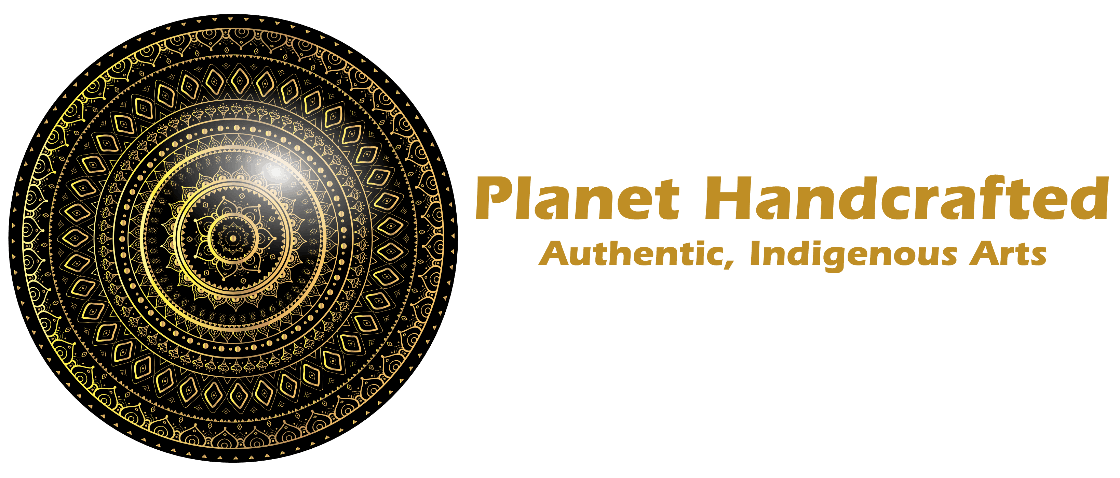

 USD
USD  GBP
GBP EUR
EUR AED
AED



